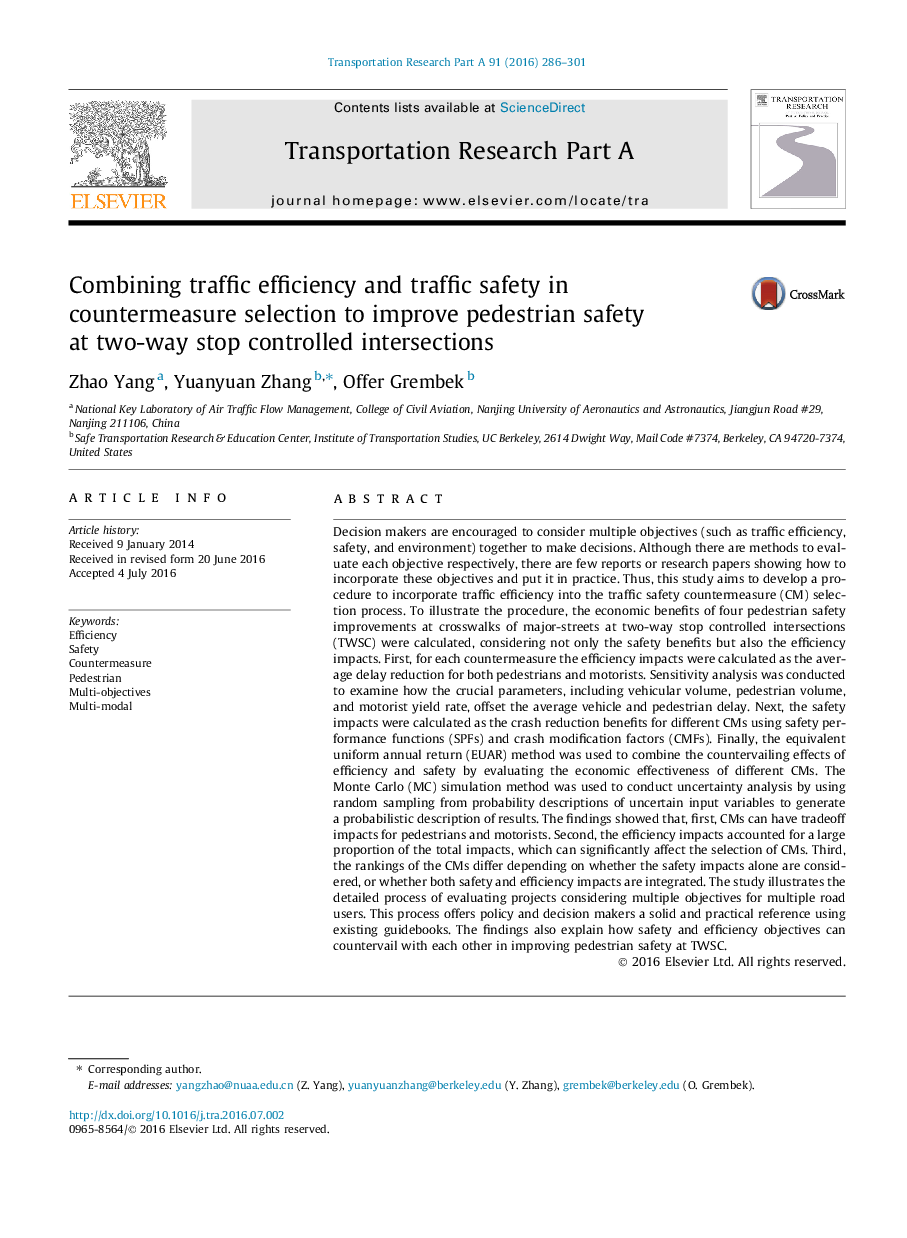| کد مقاله | کد نشریه | سال انتشار | مقاله انگلیسی | نسخه تمام متن |
|---|---|---|---|---|
| 310383 | 533081 | 2016 | 16 صفحه PDF | دانلود رایگان |
• Traffic efficiency was incorporated into the safety countermeasure (CM) selection.
• The Monte Carlo simulation method was used to conduct uncertainty analysis.
• CMs were found to have tradeoff impacts for pedestrians and motorists.
• The efficiency impacts accounted for a large proportion of the total impacts.
• The incorporation of efficiency changes the ranking of the safety CMs.
Decision makers are encouraged to consider multiple objectives (such as traffic efficiency, safety, and environment) together to make decisions. Although there are methods to evaluate each objective respectively, there are few reports or research papers showing how to incorporate these objectives and put it in practice. Thus, this study aims to develop a procedure to incorporate traffic efficiency into the traffic safety countermeasure (CM) selection process. To illustrate the procedure, the economic benefits of four pedestrian safety improvements at crosswalks of major-streets at two-way stop controlled intersections (TWSC) were calculated, considering not only the safety benefits but also the efficiency impacts. First, for each countermeasure the efficiency impacts were calculated as the average delay reduction for both pedestrians and motorists. Sensitivity analysis was conducted to examine how the crucial parameters, including vehicular volume, pedestrian volume, and motorist yield rate, offset the average vehicle and pedestrian delay. Next, the safety impacts were calculated as the crash reduction benefits for different CMs using safety performance functions (SPFs) and crash modification factors (CMFs). Finally, the equivalent uniform annual return (EUAR) method was used to combine the countervailing effects of efficiency and safety by evaluating the economic effectiveness of different CMs. The Monte Carlo (MC) simulation method was used to conduct uncertainty analysis by using random sampling from probability descriptions of uncertain input variables to generate a probabilistic description of results. The findings showed that, first, CMs can have tradeoff impacts for pedestrians and motorists. Second, the efficiency impacts accounted for a large proportion of the total impacts, which can significantly affect the selection of CMs. Third, the rankings of the CMs differ depending on whether the safety impacts alone are considered, or whether both safety and efficiency impacts are integrated. The study illustrates the detailed process of evaluating projects considering multiple objectives for multiple road users. This process offers policy and decision makers a solid and practical reference using existing guidebooks. The findings also explain how safety and efficiency objectives can countervail with each other in improving pedestrian safety at TWSC.
Journal: Transportation Research Part A: Policy and Practice - Volume 91, September 2016, Pages 286–301
